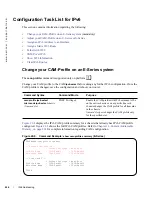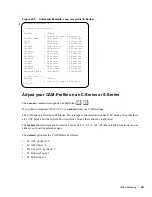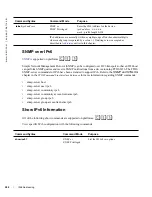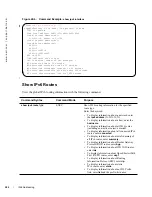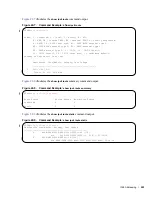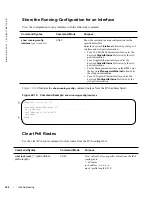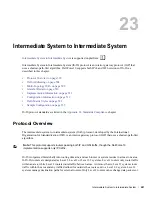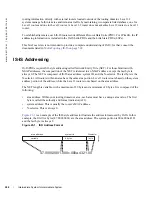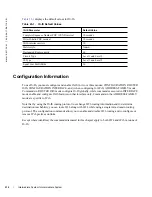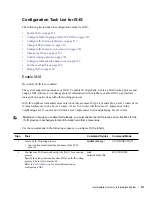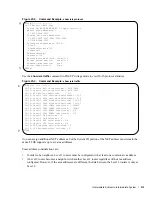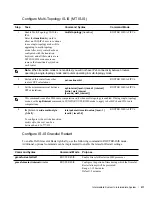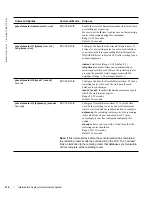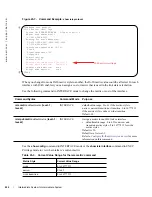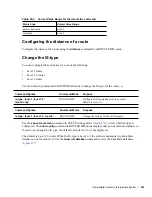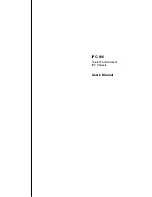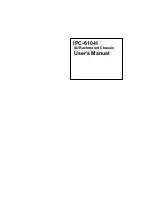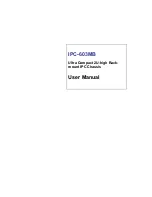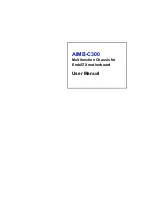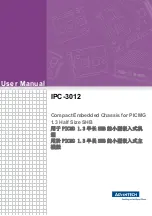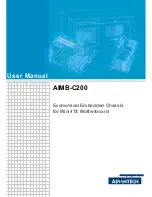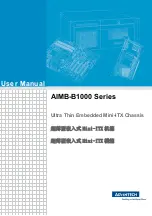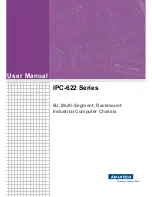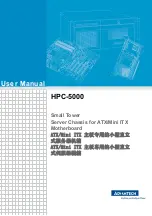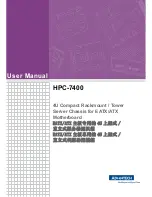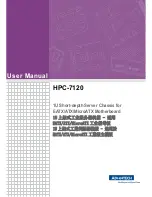
510
|
Intermediate System to Intermediate System
www.dell.com | support.dell.com
Adjacencies
Adjacencies on point-to-point interfaces are formed as usual, where IS-IS routers do not implement
Multi-Topology (MT) extensions. If a local router does not participate in certain MTs, it will not advertise
those MT IDs in its IIHs and so will not include that neighbor within its LSPs. If an MT ID is not detected
in the remote side's IIHs, the local router does not include that neighbor within its LSPs. The local router
will not form an adjacency if both routers don't have at least one common MT over the interface.
Graceful Restart
Graceful Restart is supported on
e
platforms for both Helper and Restart modes.
Graceful Restart is a protocol-based mechanism that preserves the forwarding table of the restarting router
and its neighbors for a specified period to minimize the loss of packets. A graceful-restart router does not
immediately assume that a neighbor is permanently down and so does not trigger a topology change.
Normally, when an IS-IS router is restarted, temporary disruption of routing occurs due to events in both
the restarting router and the neighbors of the restarting router. When a router goes down without a Graceful
Restart, there is a potential to lose access to parts of the network due to the necessity of network topology
changes.
IS-IS Graceful Restart recognizes the fact that in a modern router, the control plane and data plane are
functionality separate. Restarting the control plane functionality (such as the failover of the active RPM to
the backup in a redundant configuration) should not necessarily interrupt data packet forwarding. This
behavior is supported because the forwarding tables previously computed by an active RPM have been
downloaded into the Forwarding Information Base on the line cards (the data plane) and are still resident.
For packets that have existing FIB/CAM entries, forwarding between ingress and egress ports can continue
uninterrupted while the control plane IS-IS process comes back to full functionality and rebuilds its routing
tables.
A new TLV (the Restart TLV) is introduced in the IIH PDUs, indicating that the router supports Graceful
Restart.
Timers
Three timers are used to support IS-IS Graceful Restart functionality. Once Graceful Restart is enabled,
these timers manage the the Graceful Restart process.
•
The T1 timer specifies the wait time before unacknowledged restart requests are generated. This is the
interval before the system sends a Restart Request (an IIH with RR bit set in Restart TLV) until the
CSNP is received from the helping router. The duration can be set to a specific amount of time
(seconds) or a number of attempts.
•
The T2 timer is the maximum time that the system will wait for LSP database synchronization. This
timer applies to the database type (level-1, level-2 or both).
Summary of Contents for Force10 E300
Page 1: ...FTOS Configuration Guide FTOS 8 4 2 7 E Series TeraScale C Series S Series S50 S25 ...
Page 32: ...32 w w w d e l l c o m s u p p o r t d e l l c o m ...
Page 132: ...132 802 1X w w w d e l l c o m s u p p o r t d e l l c o m ...
Page 310: ...310 Configuration Replace and Rollback w w w d e l l c o m s u p p o r t d e l l c o m ...
Page 330: ...330 Dynamic Host Configuration Protocol w w w d e l l c o m s u p p o r t d e l l c o m ...
Page 402: ...402 High Availability w w w d e l l c o m s u p p o r t d e l l c o m ...
Page 462: ...462 Interfaces w w w d e l l c o m s u p p o r t d e l l c o m ...
Page 482: ...482 IPv4 Addressing w w w d e l l c o m s u p p o r t d e l l c o m ...
Page 506: ...506 IPv6 Addressing w w w d e l l c o m s u p p o r t d e l l c o m ...
Page 582: ...582 Layer 2 w w w d e l l c o m s u p p o r t d e l l c o m ...
Page 642: ...642 Multicast Source Discovery Protocol w w w d e l l c o m s u p p o r t d e l l c o m ...
Page 662: ...662 Multiple Spanning Tree Protocol w w w d e l l c o m s u p p o r t d e l l c o m ...
Page 690: ...690 Object Tracking w w w d e l l c o m s u p p o r t d e l l c o m ...
Page 754: ...754 PIM Dense Mode w w w d e l l c o m s u p p o r t d e l l c o m ...
Page 784: ...784 PIM Source Specific Mode w w w d e l l c o m s u p p o r t d e l l c o m ...
Page 800: ...800 Power over Ethernet w w w d e l l c o m s u p p o r t d e l l c o m ...
Page 876: ...876 Quality of Service w w w d e l l c o m s u p p o r t d e l l c o m ...
Page 892: ...892 Routing Information Protocol w w w d e l l c o m s u p p o r t d e l l c o m ...
Page 1006: ...1006 Simple Network Management Protocol w w w d e l l c o m s u p p o r t d e l l c o m ...
Page 1018: ...1018 SONET SDH w w w d e l l c o m s u p p o r t d e l l c o m ...
Page 1048: ...1048 Broadcast Storm Control w w w d e l l c o m s u p p o r t d e l l c o m ...
Page 1096: ...1096 Uplink Failure Detection UFD w w w d e l l c o m s u p p o r t d e l l c o m ...
Page 1098: ...1098 Upgrade Procedures w w w d e l l c o m s u p p o r t d e l l c o m ...
Page 1196: ...1196 C Series Debugging and Diagnostics w w w d e l l c o m s u p p o r t d e l l c o m ...
Page 1252: ...1252 Standards Compliance w w w d e l l c o m s u p p o r t d e l l c o m ...
Page 1262: ...1262 Index w w w d e l l c o m s u p p o r t d e l l c o m ...

